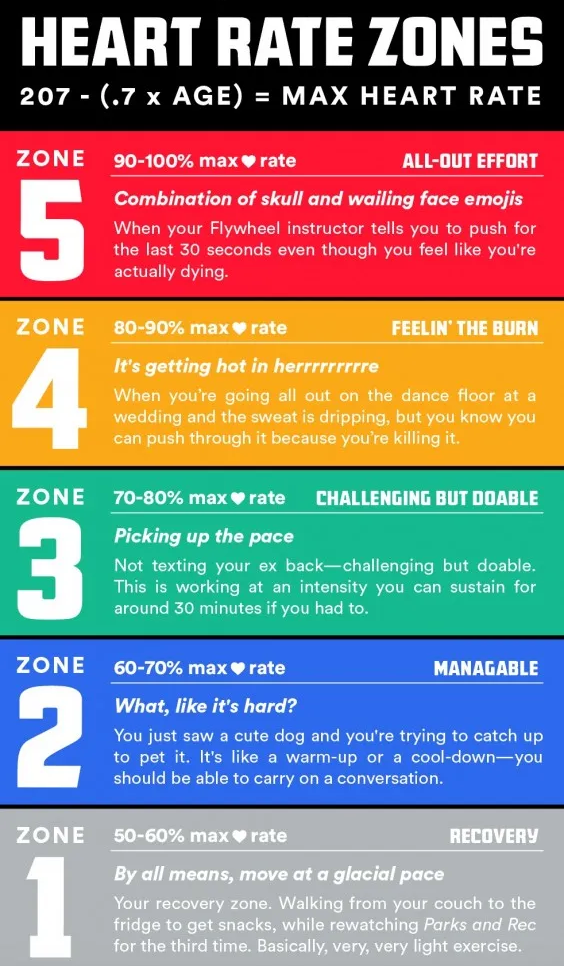What is Considered a Long Run? (5 Long Run Examples)
Long runs are an integral part of almost every runner’s training plan, regardless of whether they are preparing for a 5K or a marathon.
In this article, you will find answers to the most common questions that I’ve been asked about long runs. Additionally, I will give you 5 examples of long run workouts.
Generally speaking, a long run is the longest run of the week done with the goal of improving endurance and aerobic capabilities. It lasts an average of 1 to 3 hours and varies depending on the discipline for which the runner is preparing, training experience, weekly mileage, and proneness to injury.
If you are preparing for a marathon, then it will not be enough to run a 10-mile long run.
However, if you are preparing for a 10K, then 10 miles will be more than enough.
Read below why long runs are important, how long they should be, and how to determine the proper pace for them.

Why are long runs important?
Long runs are important for almost all runners since they improve your aerobic capacity and make you a faster and more efficient runner.
Long-distance running improves your strength and muscle endurance as it creates more mitochondria (structures that generate energy in cells) and capillaries (small blood vessels used for carrying oxygen and waste products to and from cells) in your muscle cells.
Your heart becomes stronger and the amount of blood that can be pumped in one heartbeat gets increased.
This means that you become able to endure greater physical exertion and, with it, become faster.
Long runs help adjust your tendons, ligaments, bones, and joints to the physical stress of running.
Moreover, your body learns to use fats for fuel, and not glycogen or stored sugars, which results in a longer duration of glycogen stores and helps you avoid “hitting the wall”.
Likewise, long runs build your self-confidence and mental strength as they teach you how to cope with discomfort despite leg fatigue.
Additionally, long runs are a great form of rehearsal before a race, allowing you to test your equipment and try out refreshments to avoid any potential inconveniences on the day of the race.
Read more: The Purpose of the Long Run (21 Long Run Benefits)

Is 5 miles a long run?
The simple answer is yes. Running a 5-mile long run is considered adequate when preparing for a 5K or a 10K.
But keep in mind that if you are preparing for a half marathon or marathon, then that will not be enough.
How long should my long runs be for a 5K?
When preparing for a 5K, long runs should be approximately 7 to 10 miles long.
If you are a beginner and your goal is only to finish a 5K, then your long runs will not be typical and you will instead alternate between walking and running until, gradually, you are able to run 5K without stopping.
If you are an experienced runner and you wish to run a 5K as best as you can, then your long runs should last around 90 minutes.
However, make sure that your long runs are not longer than 30% of your weekly mileage.
In preparation for a 5K, long runs improve your endurance and help you maintain a faster pace for a longer time.
Read more: Long Run for 5K
How long should my long runs be for a 10K?
When preparing for a 10K, long runs should be approximately 8 to 11 miles long.
Long runs will improve your endurance, stamina, and resistance to fatigue.
Even though 10K races are relatively short, you will need endurance and stamina to maintain a certain pace for as long as possible.
Long runs will be around 8 to 10 miles long for those who only wish to finish a 10K or the runners with lower weekly mileages.
Meanwhile, intermediate and advanced runners should run long runs around 10 to 11 miles long.
Read more: Long Run for 10K

How long should my long runs be for a half marathon?
When preparing for a half marathon, long runs should be approximately 11 to 15 miles long.
Those runners who are preparing for their first half marathon should do long runs around 11 miles long.
Meanwhile, experienced runners can do long runs that are up to 15 miles long.
Many runners are worried about finishing an entire half marathon since they have never run that distance during training.
However, don’t forget that you do long runs from full training, without tapering. On the other hand, you go on races fresh and full of adrenalin.
Likewise, running in a group will help and motivate you even further.
If you wish to finish your first half marathon within a time frame, then your long runs should be around 11 miles long.
Most training plans consist of 12 to 20 weeks of preparation for a half marathon. Initially, the distances of your long runs will be somewhat shorter and will gradually increase week by week.
However, it is still necessary to reduce distances of long runs every 4 weeks so that your body can recover and adapt to training.
Once you reach your peak, that is, around three weeks before a half marathon, then you should start tapering. With tapering you gradually reduce the volume of training to allow your body to recover and to be in the best shape on race day.
How long should my long runs be for a marathon?
When preparing for a marathon, long runs should be approximately 20 to 25 miles long.
Running a marathon is a great stress for your body and it thus requires a smart approach to training.
Maybe you will want to run the full marathon while training to make sure that you will be able to finish the race.
However, that is not necessary because you will exhaust yourself and risk some of the injuries that will keep you from running.
During training, it is not necessary to run the whole distance of a marathon, instead, you should follow a structured training plan.
Long runs are done from full training, which means that your body will not be in optimal condition as on the day of the race.
In preparation for a marathon, long runs will not only improve your endurance and stamina but will also mentally prepare you for the strain that awaits you and improve your resistance to fatigue.
Likewise, during long runs, you can try different refreshments to determine what suits you best and avoid any unpleasant surprises during the race.
If you run longer than 3 and a half hours, the physiological benefits are insignificant when you take into account the greater risk of injury and longer recovery time.
Due to that, in most training plans, you will find 20 miles as the longest distance for long runs when preparing for a marathon.

Most training plans consist of 16 to 24 weeks of preparation for a marathon. Initially, the distances of your long runs will be somewhat shorter and will gradually increase week by week.
However, you should still reduce the distances of your long runs every 4 weeks so that your body can recover and adapt to training.
When you reach your peak, that is, around three weeks before a marathon, then you should start tapering. With tapering you gradually reduce the volume of training to allow your body to recover and be in the best shape on race day.
What percentage of your weekly mileage is long run?
Long run should be 20% to 30% of your total weekly mileage, with no need to run longer than 3 hours.
For example, if you currently run 30 miles per week, then your long run should not be longer than 9 miles.
The length of long runs varies according to the race for which you are preparing, what part of the season it is, whether you are a beginner or a more experienced runner, and your proneness to injury.
At the beginning of your training cycle, long runs are somewhat shorter, and their length increases week by week until you reach your peak.
However, it is still necessary to reduce the length of long runs every 4 weeks to allow your body to rest and adapt to training.
You should also start tapering a couple of weeks before a race, that is, gradually reducing the length of long runs in order to recover and be ready on the day of the race.
If you run longer than recommended, you increase the risk of injury and the appearance of overtraining, as you are not able to adequately recover within 24–48 hours and be ready for the next workout.
Does pace matter in long runs?
The long run pace is important, just like the distance. In order to achieve the purpose and goal of the workout, we need to run at a predetermined pace.
That way, not only will you gain the physiological benefits of the workout but also avoid the appearance of overtraining and reduce the risk of injury.
Besides tracking your pace, listen to your body and adjust your pace to weather conditions, terrain, and your subjective feeling in order to run in accordance with your anticipated exertion and to gain all the benefits from the workout.
What pace should I run my long runs?
It is hard to give the right answer when it comes to the ideal pace that will ensure all the advantages of the long run without simultaneously increasing the risk of injury and overtraining.
The pace of your long runs depends on multiple factors.
First of all, it depends on the type of long run that you will be doing.
For instance, will you be doing an easy long run intended for building your aerobic endurance, or a progressive long run, in which you start at a slower speed and then gradually accelerate until you come to your desired speed or a long run with which you will simulate race conditions and increase your fatigue resistance.
Furthermore, the pace and intensity of long runs depend on your current fitness level, your experience, and the terrain on which you will be running.

In order to include long runs into your training plan, it is important to determine your training goal beforehand, as well as your goal for long runs, in order to adjust the intensity and exertion that will be required of you.
There are multiple ways to determine the intensity and exertion with which you will be doing your long runs following :
- a predetermined running pace
- your heart rate
- your subjective feeling
1. Following a predetermined running pace
In order to determine your pace for long runs, your main determiner can be a certain percentage relative to your current pace in a particular race.
That way we want to predetermine the pace that does the least amount of physical stress to your body while producing maximum physiological effects.
Tip
Generally speaking, the pace of a long run is 55–75% of your current pace at 5K, since it has been shown that running faster than this will not provide any notable physiological benefits, and will instead make you more tired and prone to injury.
For example, if my current 5K average pace is 6:30 min/mi, then you should run your long runs at about 8:21 to 9:12 minutes per mile.
2. Following your heart rate
Furthermore, measuring your heart rate can be another good way of determining the intensity of your long runs, done either by measuring your beats per minute (bpm) or the percentage of your maximum heart rate (MHR).
Depending on your heart rate, there are heart rate zones that help you determine the intensity of a certain workout.
In order to find your heart rate zones, you must first determine your maximum heart rate and multiply it by the minimum and maximum percentages indicated by each zone.

Long runs are performed within zones 2 and 3, that is, 60-75% of your maximum heart rate, which is around 130–140 bpm for most people.
However, it is important to know that your training intensity doesn’t always remain the same when you run at a certain pace.
Different factors affect your heart rate, such as weather, terrain, hydration, diet, the amount of sleep, everyday stress, and how you generally feel that day.
It is possible that you will run at a different pace to stay within a certain zone.
Example
If you run during high heat, your pace will not be the same as when you run in colder weather. In these conditions, your heart will work faster to allow your body to cool. Due to that, the total blood flow will increase and the number of beats per minute will rise. This means that you have to run at a slower pace if you want to stay within a certain zone, that is, maintain the same heart rate. If you run slower in poorer conditions, you will still run at the same intensity, while maintaining a different pace.
Therefore, if the goal of a particular workout is to spend time maintaining a certain speed, then your heart rate is not a desirable indicator.
On the other hand, if running intensity is important, then monitoring your heart rate is very useful.
This method of monitoring your heart rate can be useful for runners as long as they are aware that their heart rate can vary depending on the above-listed conditions and factors.
3. Following your subjective feeling
The hardest, but also the most precise method of determining training intensity is following your subjective feeling, that is, running by feel.
Regardless of weather conditions or the terrain on which you are running, by listening to your body, you can determine your amount of exertion during running.
Long runs are done at a conversational pace, meaning that you can normally speak while running without losing your breath.
According to the RPE scale (rate of perceived exertion scale) that goes from 1 to 10, where 1 is a very light activity and 10 is the maximum, the level of exertion is measured around 3 to 5.

Info
Running by feel is the most demanding method since your subjective feelings can easily fool you. This is especially true for beginners since one of the most common beginner mistakes is running too fast or miscalculating your running pace. Therefore, be careful while running by feel and listen to your body. Remember that it is better to run slower than your anticipated exertion than faster.
How often should you do a long run?
Generally, the long run is done once a week.
But be careful about the type of long run you do.
It is not recommended to do a specific type of long run every week, such as a progressive long run or a long run with which you simulate race conditions.
Such types of long runs are quite strenuous and difficult and require a longer recovery. For this reason, it is advisable to do them at least every other week.
Avoid doing them 2 weeks before a certain race.
How can I make my long runs less boring?
Long runs are sometimes boring and monotone to some runners, especially those who are preparing for shorter races, such as the 5K.
However, there are ways in which you can make your long runs more interesting. These are some of my suggestions.
Change your running route. Your workout might gradually become monotone or boring if you always run on the same route.
Listen to music or a podcast. There are days when I can’t listen to music while running and instead run alone with my thoughts. However, there are also days when I can’t even imagine running a long run without music.
Run with other runners. We sometimes need additional motivation for training. In these cases, ask your friend to join you. Not only will time go by faster, but you will also do a great workout.
Split your workout into smaller segments. Go step by step, and split your workout into smaller goals. Time will pass much faster if you do not think about the end goal and instead focus on the way in front of you.
Example
If you have a 90-minute run on your schedule, split it into 3 parts of 30 minutes each. Don’t think about the end of the workout and instead focus on each part separately.
Use visualization. It used to help me when I visualized my long runs as a form of climbing and descending a hill. In the first half, I saw myself climbing a hill, and then I descended in the second half.
Example
I have a 2-hour run on my schedule. I reached the top of the hill by the end of the first hour and now I’m going to descend. This means that the worst has passed and now I can more easily focus on the other hour of running.

What to do the night before a long run?
A long run is quite a demanding workout and requires certain preparation the night before in order to be ready and able to do the workout without interruption.
Go to sleep early.
Inadequate rest contributes to increased stress, increased fatigue, and lack of concentration. It is best that you do this workout in the morning to avoid having issues sleeping after training.
Read more: Why Can’t I Sleep After a Long Run? (12 Most Common Reasons)
Check the weather.
In order to dress accordingly, check the weather report the night before to see whether it will be rainy or sunny and to know the average temperature.
There are no bad weather conditions, only bad gear.
Running in unfavorable weather conditions will prepare you even better for the day of a race.
Prepare your running gear.
The night before, decide what you will wear for your workout, from running shoes to caps.
That way you will prevent unnecessary stress in the morning before the workout, especially if you run in the early morning hours.
Besides that, you will create a routine and apply it the day before a race.
Prepare refreshments.
Prepare all that you will consume during training, be it an energy gel or an isotonic drink.
Pay attention to what you have for dinner.
The night before a long run, avoid all food that is rich in fibers or difficult-to-digest fatty food in order to avoid digestive problems during running. My favorite dinner before a long run is tomato pasta.
Charge your phone and smartwatch.
The night before a long run, charge all the devices that you intend to carry with you.
My smartwatch once ran out of battery, and I couldn’t track my training in its entirety.
Since then, I always check my watch and its battery the night before a long run.
Pay attention to hydration.
What we drink is just as important as what we eat.
Get enough fluids the day before.
However, be careful not to overdo it so that you will not have problems with sleeping and waking up during the night due to going to the toilet.
Don’t drink alcohol.
There are a couple of reasons why it is not desirable that you drink alcohol the night before a long run.
Besides being inadequately hydrated, your body will be too busy trying to filter toxins, and you will not be able to run as well as usual.
Plan your running route.
Think about where you will perform your long run.
That way, you can plan where you will put your refreshments and what sort of clothes you will need.
For instance, if you know that it will be hot, try running in a forest. I loved doing my more demanding workouts always on the same route around a lake. On that route, I had refreshments every 2 miles and I was never alone in case something happened to me.

Long run workout examples
There are several variations of long runs.
1. Long slow distance run (LSD)
A typical type of long run consists of continuous steady running at a lower intensity. It is done at a conversational pace.
Goal: building your base, developing aerobic endurance, cardiovascular system, and fat metabolism
Example 1
11 miles of running at a controlled, conversational pace
Example 2
2 hours of running at a controlled, conversational pace
2. Progressive long run
A type of long run that consists of continuous, gradual acceleration of pace.
Start at a slower pace and gradually accelerate to your desired pace. At the end of the whole workout, run at least 1 mile at a slow speed to cool down.
Goal: mental and physical preparation that teaches you how to accelerate despite leg fatigue
Example
3 mi – controlled, conversational pace
6 mi – 15 seconds slower than marathon pace
4 mi – marathon pace
2 mi – 10-15 seconds faster than marathon pace
1 mi – slower pace, cooldown
3. Negative split
You can do a long run by doing a negative split where you run the second half faster than the first one.
Run the first half of your distance at a slower, conversational pace. Then, when you reach half of the set distance, gradually accelerate to your desired pace.
Goal: increase fatigue resistance, teach your body and mind to run the second half of the distance faster
Example
7 mi – controlled, conversational pace
7 mi – 10-15 seconds faster than marathon pace
4. Long run with faster running segments
A type of long run that consists of continuous running at a lower intensity with faster running segments.
Faster running segments can last from around 30 seconds up to 12 minutes. Between these segments, you can run at a slower pace or a set pace, such as a marathon pace.
Goal: improve your efficiency and ability to burn fat as a fuel source
Example
20 minutes – controlled, conversational pace
60 minutes – 1 minute at a half marathon pace followed by 5 minutes of marathon pace
10 minutes – easy running
5. Long run at a race pace
A type of long run that consists of segments run at the pace of a race you are preparing for, either a half marathon or a marathon.
Goal: increasing fatigue resistance, building self-confidence, and mental strength increasing the percentage of fat burning in relation to carbohydrates when running at the marathon pace
Example
3 mi – controlled, conversational pace
11 mi – 6 x 1 mi run at marathon pace followed by 1 mi of easy pace
3 mi – controlled, conversational pace

Matea Matošević
Hi, I’m Matea! I’m an Olympic Marathon Runner, founder, and writer behind OLYRUN.com. On this site, I provide help in the form of my knowledge and experience to all who love running and active living. Read more…

